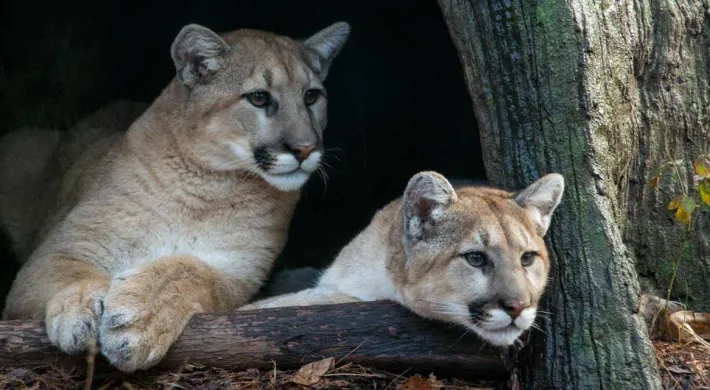About:
Did you know cougars are commonly known by at least five different common names, but there are many more names like 'ghost cat' that are less common? Learn more about cougars.
Care & Wellness:
Keepers do many things to create a novel and enriching habitat for cougars. They may add brush piles, plants, areas of shade, and climbing structures. Keepers can also rearrange the “furniture” (logs, rocks, shelters) within the habitat. Placing scents in the habitat encourages the cougars to explore.
Behavior:
- Cougars tend to be solitary out of breeding season.
- Territories can reach 125 square miles and are regularly patrolled by individuals.
- Vocalizations may be screams, whistles, growls, purrs, and hisses.
- They can jump 18 ft high and make 40 ft long leaps.
Endangered Status
- Extinct in Wild (EW)
- Critically Endangered (CR)
- Endangered (EN)
- Vulnerable (VU)
- Near Threatened (NT)
- Least Concern (LC)
- Not Evaluated (NE)




